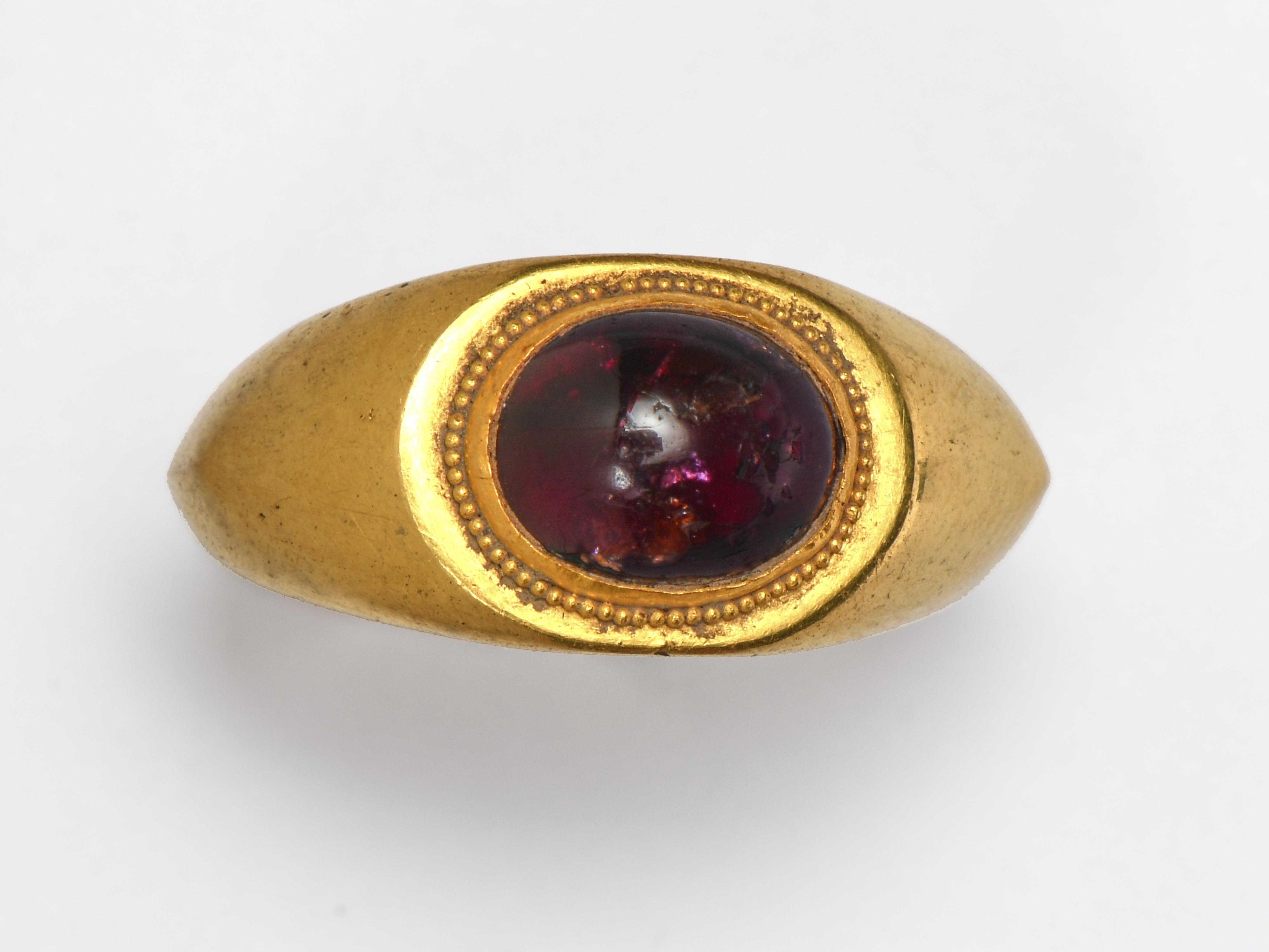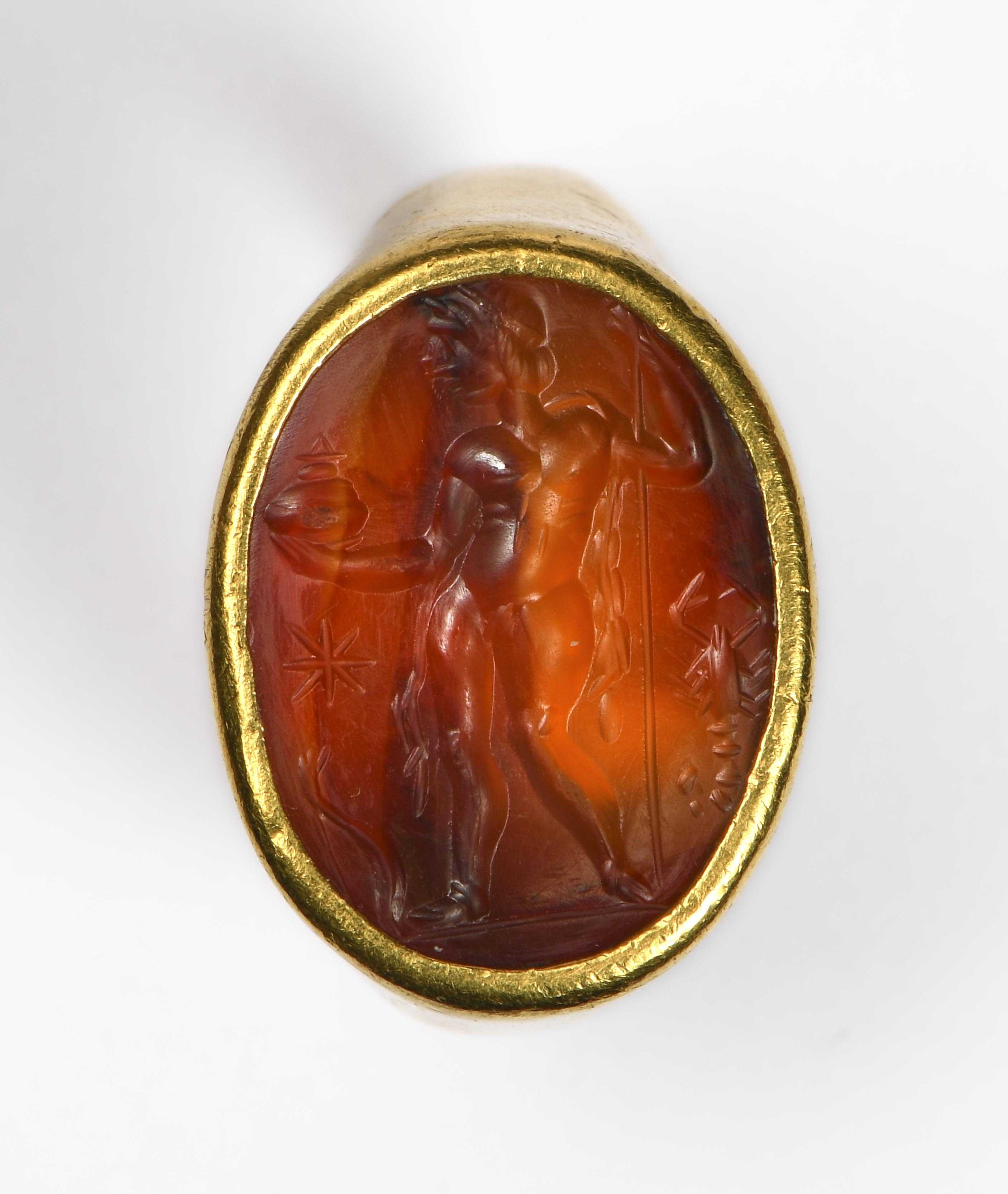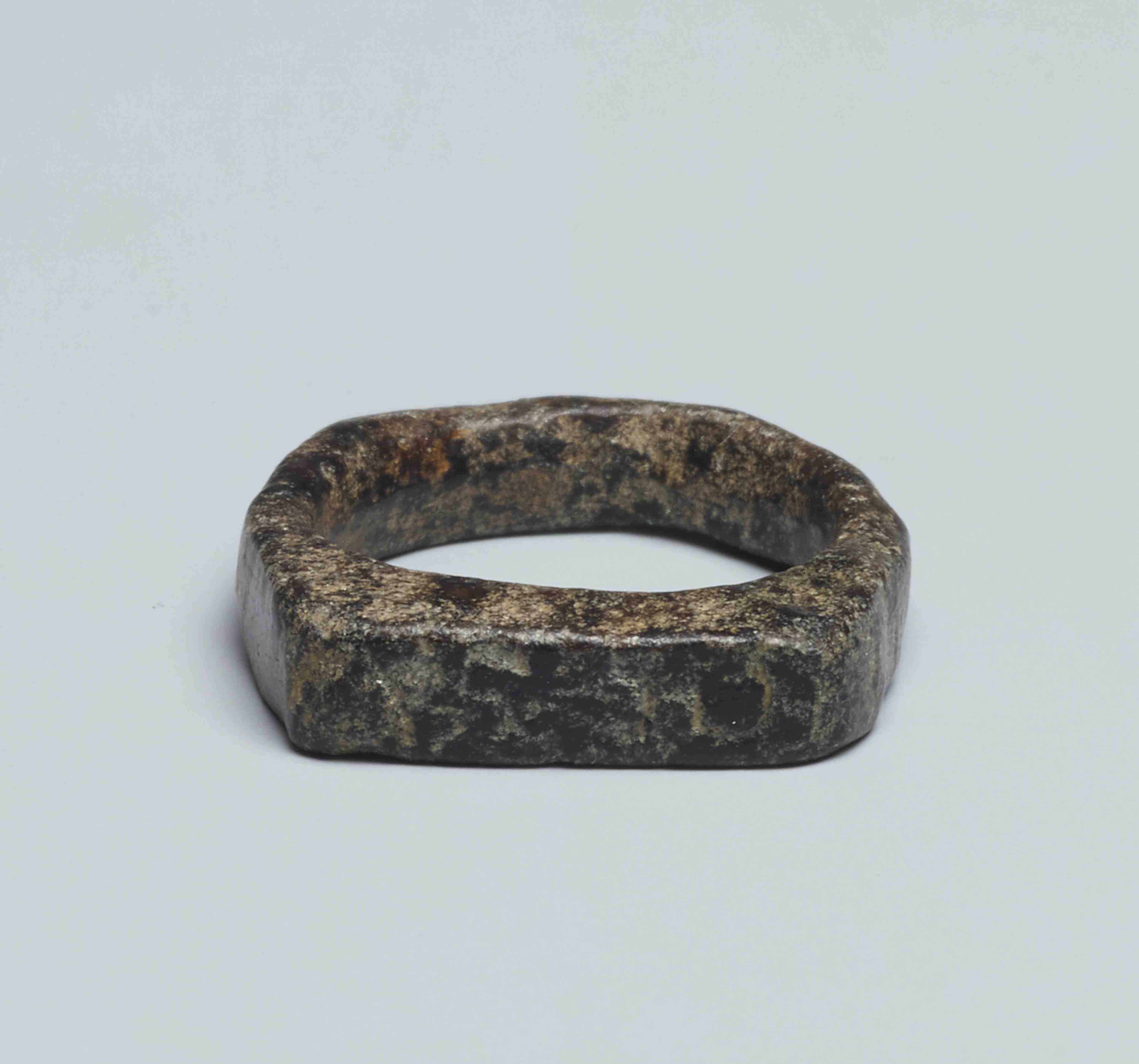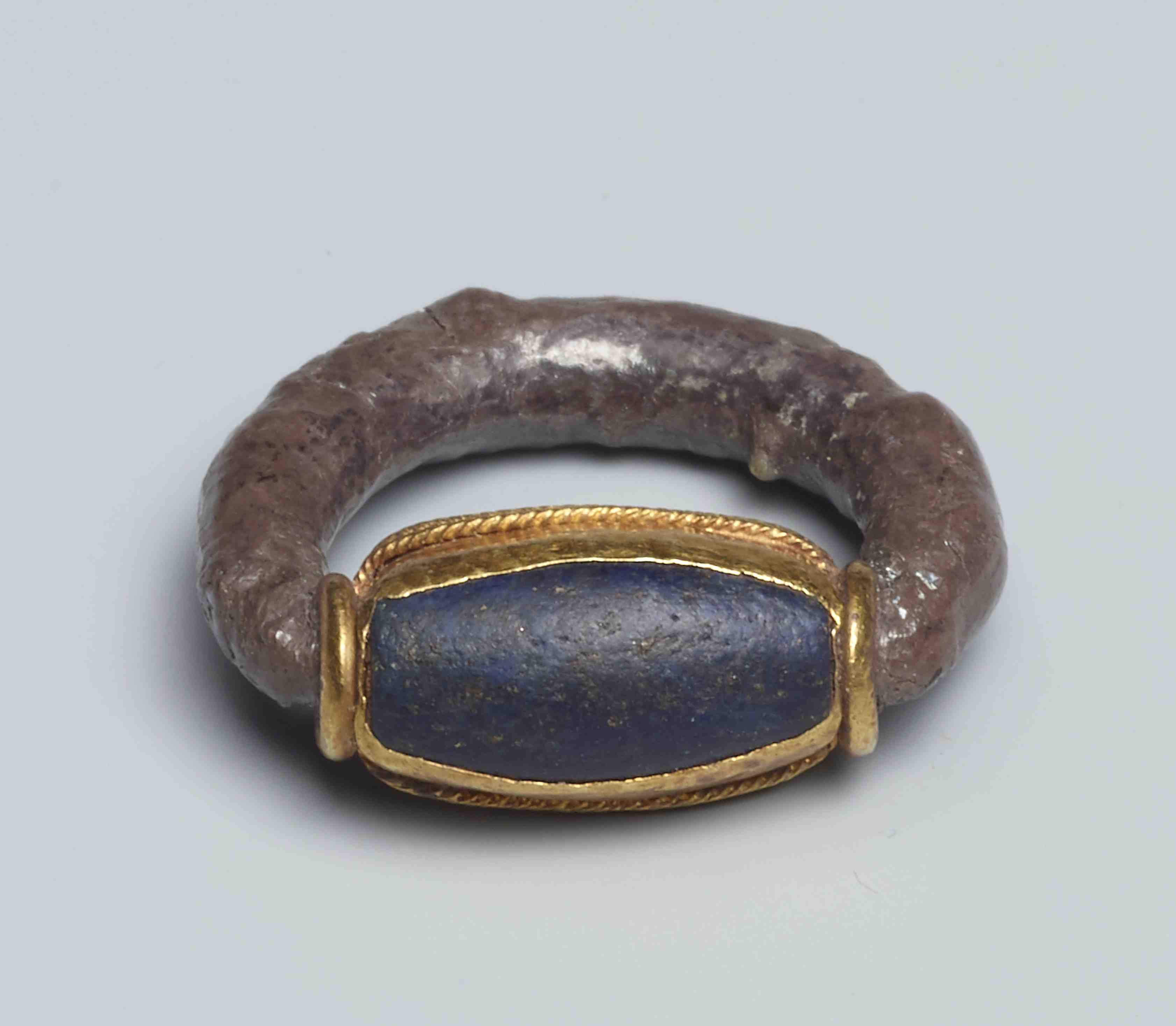Gold and agate cameo pendant
Carved in two layers, white on black, with a head of Gorgo Medusa framed by thick curly hair, wings visible, the face well defined with articulated eyes; mounted as a gold pendant.
Note
The head of Medusa, also known as the gorgoneion, was perhaps "the most ubiquitous subject employed for cameos" during the Roman Period (p. 183 in M. Henig and H. Molesworth, The Complete Content Cameos). When used in jewelry it was thought to have amuletic or apotropaic properties, conferring protection to the wearer, including from the Evil Eye. During the Roman period, the type is typically shown either frontally or slightly turned, with wings in her hair, the face framed by serpents. The most common materials were sardonyx, chalcedony, carnelian or glass imitating them. It is mounted as a pendant in a its original Roman gold frame.
Frank Sternberg AG, Kunst und Antiquitätenmesse 1997, no. 337
Private collection, Switzerland







